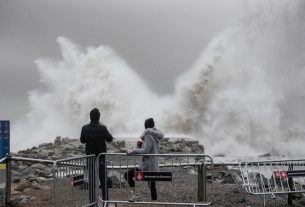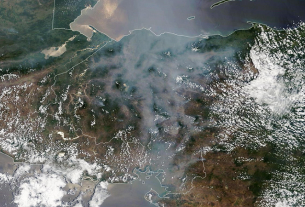The intensity of hurricanes such as Dorian, which last week hit the Bahamas as category 5, was something scientists had pointed out could happen due to climate change. These phenomena would not be so frequent but devastating.
20th century: uncertainties
In the absence of satellite data on a planetary scale before 1970, it is not possible to say how hurricane activity evolved in the twentieth century. Before the installation of complete satellite surveillance, even very intense hurricanes could go unnoticed if they did not touch the ground, for example. Hence the weakness of statistical data and the prudence of scientists.
In the North Atlantic, for about twenty years, an increase in the frequency of hurricanes was observed, unlike between 1970 and 1995, according to Franck Roux, of the Paul-Sabatier University of Toulouse (France).
In this region, the researchers noted that hurricane activity follows cycles of several tens of years and consider that it is not yet possible to say whether the increase in the number of hurricanes in the area is due to natural variability or climate change.
In the Pacific Northwest, there was a slight decrease in hurricane activity between 1980 and 2010.
21st century: more intensity
The computer models that simulate the climate of the 21st century reveal a possible increase in the intensity of hurricanes (winds and rains) and a potential decrease in their frequency around the planet.
“Hurricanes with a greater intensity are one of the expected consequences of climate change,” said Valerie Masson-Delmotte, a member of the GIEC, a global reference group on climate.
“The higher the water temperature and the humidity rate, the greater the intensity of the hurricane. However, these two elements are more intense due to the increase in the greenhouse effect, ”explains the climatologist. “We believe that there is 7% more humidity in the atmosphere for each degree of heating,” he says.
Sea level: still higher
The rise in the level of the oceans is one of the signs of global warming. This rise, variable according to the regions of the globe, had an average of 7.87 inches in the twentieth century and could reach almost 3 feet in 2100.
However, hurricanes also produce a swell that generates “storm surge.” The two effects combined will help put more populations and coastal buildings at risk.
In other areas
Several studies show, according to Meteo France (national meteorological and weather service of France), that “the latitude at which hurricanes reach their maximum intensity has shifted towards the poles during the last 35 years, in the two hemispheres.”
This could be related to the expansion of the tropical belt, that is, of the areas of one part and another of the Earth’s equator where a warm and humid climate reigns.
The mismatch of hurricane activity in the North Atlantic could, according to Meteo France, make the Caribbean Sea and the Gulf of Mexico become “more peaceful, to the detriment of the east coast of the United States,” although other studies should confirm this Trend.

Email: mary@satprwire.com Phone: +44 20 4732 1986
Marry is a fitness freak in every manner and gives proper care about her health and of others. She is probably the best person we have at Daily Research News for covering articles from the Health sector. If not at work, she can be seen drinking a cup of coffee.



